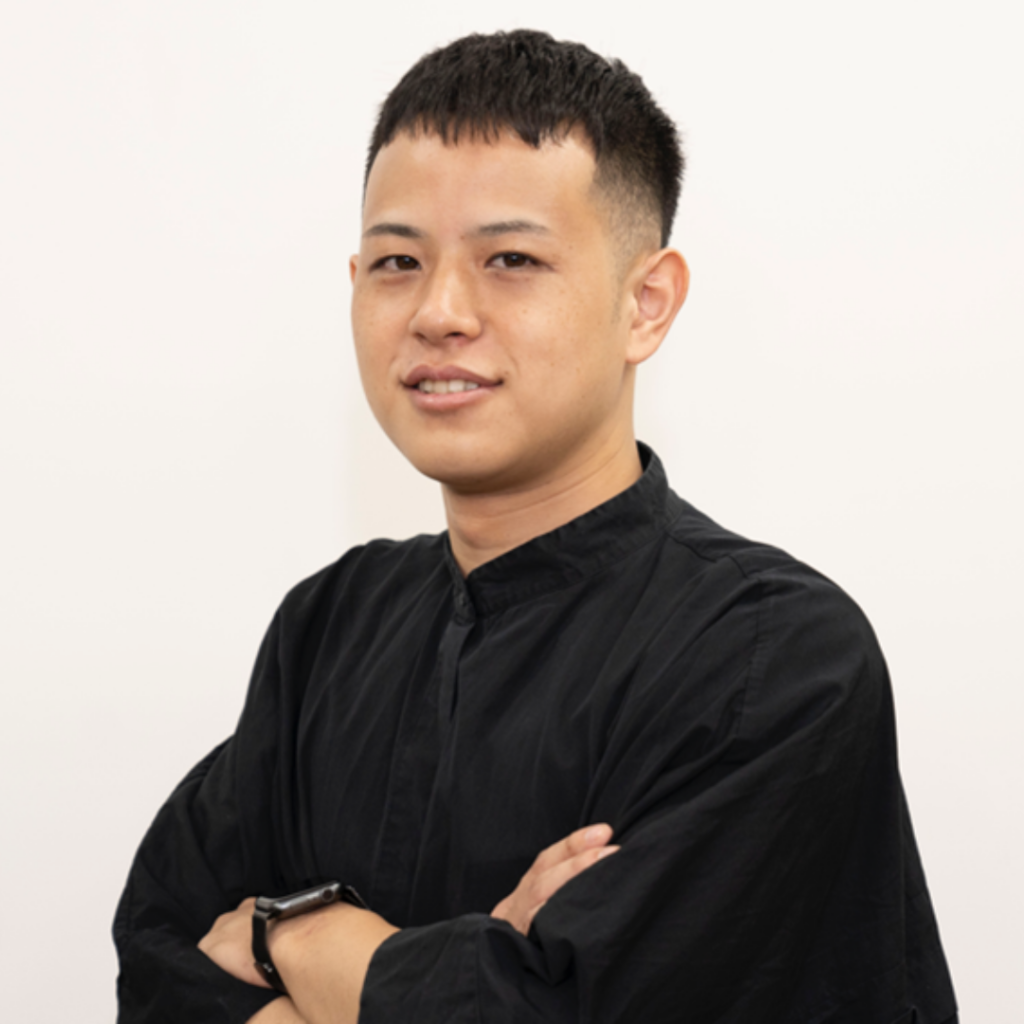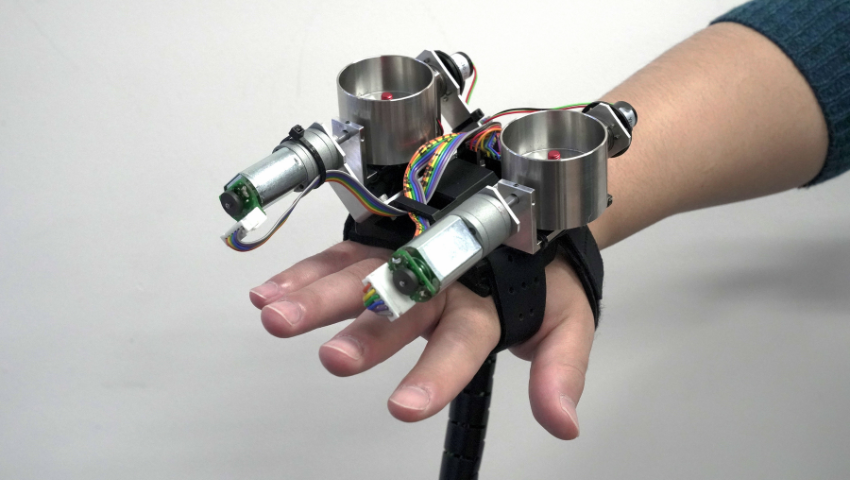Image Credit © SomatoShift: A Wearable Haptic Display for Somatomotor Reconfiguration via Modifying Acceleration of Body Movement
SIGGRAPH redefines accessibility in computer graphics and interactive techniques. We chatted with Takeru Hashimoto about the SIGGRAPH 2023 Emerging Technologies selection “SomatoShift: A Wearable Haptic Display for Somatomotor Reconfiguration via Modifying Acceleration of Body Movement” to broaden the conversation about the human somatic experience. Take a closer look into the potential applications in avatar, sports, and assistive technology; challenges faced when creating this device; and what to expect when experiencing this project this August in Los Angeles.
SIGGRAPH: Tell us about the process of developing “SomatoShift: A Wearable Haptic Display for Somatomotor Reconfiguration via Modifying Acceleration of Body Movement.” What inspired you to pursue the project?
Takeru Hashimoto (TH): The inspiration to pursue “SomatoShift” came from the increasing attention given to VR technology for self-expansion. Technologies are emerging that can alter our appearance in a 3D space — known as avatars — and auditory technologies that can edit our auditory perception, such as voice alteration technology. While VR has typically been associated with reproducing our surrounding environment, recent attention is shifting toward technology that can change our perception of ourselves. I started this project believing that a haptic feedback device, capable of affecting our internal body sensations, is the perfect device for altering our body perception.
SIGGRAPH: What was the biggest challenge you faced in its development?
TH: One of the biggest challenges was figuring out how to make users interpret the force information obtained from the device’s movement as information about their own bodies. Humans can perceive force information felt by muscles and tendons as information about the environment or their bodies. For instance, when you’re working out and start finding it hard to lift the weights, you can perceive this difficulty as either the weights becoming heavier or your body getting tired. We utilized a similar force intervention technique in a previous project [1], which was a handheld device reproducing the physical characteristics of tools. When holding a device, force feedback is more likely to be attributed to environmental information, so we adopted a wearable format allowing free finger movement. We also lightened the device to mount it on the body by reducing its output degrees of freedom.
SIGGRAPH: How does “SomatoShift” contribute to the greater accessibility and adaptability conversation? How does it advance adaptive technology?
TH: “SomatoShift” contributes to the broader conversation on accessibility and adaptability by enabling users to experience various physical properties of the body. This can deepen our understanding of what movements are easier or more difficult depending on physical characteristics. Moreover, wearing “SomatoShift” on the hand can support arm movements, and when worn on the foot, it can assist with walking. Since it’s a wearable force feedback device that doesn’t need to be grounded to the environment, it can be freely attached to various body parts. This flexibility offers the potential to further expand assistive technology, providing personalized support based on the individual’s needs and preferences.
SIGGRAPH: You envision “SomatoShift” having potential applications in avatar technology and sports along with assistive technology. How do you envision users applying your technology in real life?
TH: “SomatoShift” will enhance the sense of immersion in the avatar. When using multiple avatars for different purposes, the ability to switch body sensations along with the avatars could lead to a greater sense of immersion in each respective avatar. Athletes could use our technology in sports. By intentionally altering their perception of their body weight and movement, they could gain a fresh perspective on their original movements and refine them based on this new understanding. In addition, beginners may be able to physically experience an athlete’s movements. The ability to feel how one’s body would move if they were an athlete would be an attractive technology for professionals and those who engage in sports. It opens up a whole new level of understanding and training by allowing individuals to experience the physicality of professional athletes.
SIGGRAPH: What’s next for “SomatoShift”?
TH: The next step for “SomatoShift” is to explore whether we can change a person’s body schema through force intervention. We’ve established that force intervention can change the sensation of movement. We want to investigate whether people are simply experiencing this change or if the brain is incorporating it into its internal movement model and updating its body schema. By diving deeper into how the brain and body interact with and adapt to the changes induced by “SomatoShift,” we can further refine the device and broaden its potential applications.
SIGGRAPH: What do you find most exciting about the final product that you will present at SIGGRAPH 2023?
TH: The most exciting aspect of our presentation at SIGGRAPH 2023 is the chance to introduce a device that expands the horizons of human experience. The possibility that “SomatoShift” offers to alter one’s perception of their body and liberate themselves from physical constraints is revolutionary. We’re excited to showcase a technology that not only enhances the capabilities of VR and assistive technology but also provides a new dimension to how we understand and interact with our bodies. Furthermore, it represents our commitment to pushing the boundaries of what’s possible in haptic technology.
New technologies are emerging all around us. See groundbreaking innovations, like “SomatoShift” and more, when you join us at SIGGRAPH 2023.

Takeru Hashimoto is currently a Ph.D. student at the Cyber Interface Lab in The University of Tokyo in Japan. He is studying computer science, human-computer interaction, and robotics at the graduate school of The University of Tokyo. He received his master’s degree in information science and technology and bachelor’s degree in mechano-informatics engineering from The University of Tokyo in 2020 and 2018, respectively. His research area is virtual/augmented reality of haptics and human-augmentation with haptic technology. His awards include the ACM CHI Best Paper Honorable Mention Award and the ACM UIST Best Demo Honorable Mention Award.
[1] Takeru Hashimoto, Shigeo Yoshida, and Takuji Narumi. 2022. MetamorphX: An Ungrounded 3-DoF Moment Display that Changes its Physical Properties through Rotational Impedance Control. In Proceedings of the 35th Annual ACM Symposium on User Interface Software and Technology (UIST ’22). Association for Computing Machinery, New York, NY, USA, Article 72, 1–14. https://doi.org/10.1145/3526113.3545650



